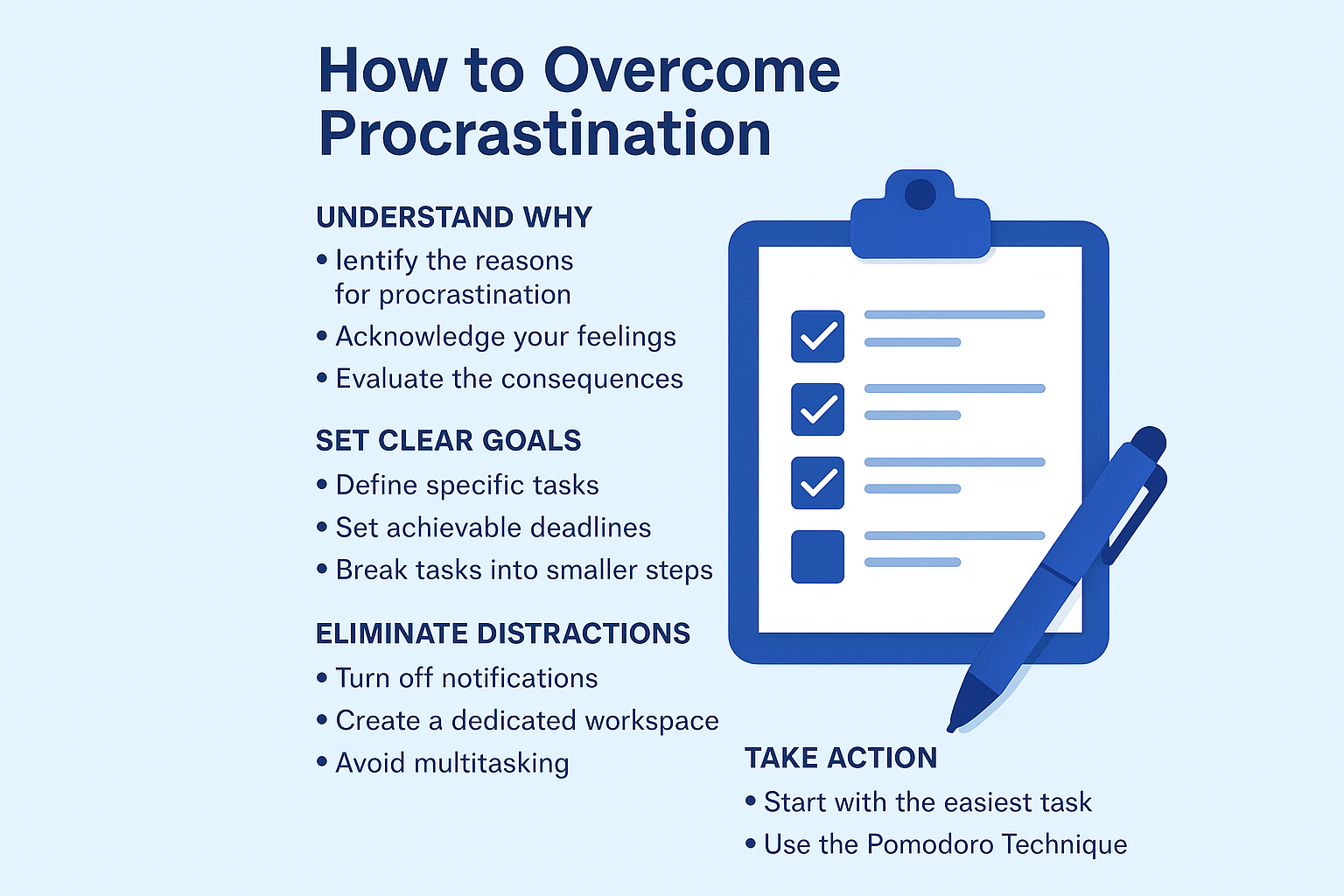Whether you want to gain a promotion, start a new business, or make healthier choices, having clear objectives gives you direction, motivation, and a method to see how well you’re doing. But a lot of people make vague promises that they don’t keep within a few weeks. Some people attain their goals and others don’t, but it’s not just talent or luck. It’s the truth that people who set goals and reach them have habits that they always follow.
Based on years of research in organizational psychology, behavior change science, and stories of success in the real world, this whole book shows you 10 behaviors of people who set and reach their goals. There are templates, expert advice, and actionable solutions that you can start utilizing right immediately.
Habit 1: Set SMART and “Why‑Driven” Goals
People who set objectives and reach them don’t just wish for the best. They use the SMART criteria—Specific, Measurable, Achievable, Relevant, and Time‑bound—to define goals and connect each one to a compelling “why” that keeps them going for a long time.
- Example: Use “Get 30% more client onboarding calls” instead of “Get more clients.”
- Set goals, like how many calls you get and how many people you convert, so you can see how well you’re doing.
- Set a goal based on what you can and can’t do.
- Relevant: It should fit in with your life or company goals.
- Give yourself a date, like “by December 31, 2025.”
Tip from an expert: Write down your “why” in a two‑sentence mission statement that you read every day. Locke and Latham’s Goal‑Setting Theory argues that being clear and dedicated can make you work better by up to 20%.
Habit 2: Picture Things in Your Mind and Practice Them
Visualization isn’t just daydreaming; it’s a way to get your brain ready to succeed. Top athletes, executives, and performers employ vivid mental images to:
- Think about how great it would be to give a fantastic keynote speech.
- Learn how to accomplish things, including how to talk to a customer.
- Think about what could go wrong and how to handle it.
A meta‑analysis from 2016 found that visualization can boost performance by 40%, especially when combined with physical practice.
Habit 3: Break Your Goals Down into Small Steps
Having too many goals can make it hard to do things. People who are good at setting objectives break them down into smaller tasks that they can perform every day. This way:
- Keeps on at a steady pace.
- Winning a lot can help you feel more sure of yourself.
- Reduces the amount of energy needed to start something, making it easier to stop putting things off.
Follow the “One‑Minute Rule” and accomplish things right immediately if they take less than a minute, such as writing a follow‑up email. This will keep tiny jobs from piling up.
Habit 4: Create Ways to Make Individuals Responsible
Accountability from outside makes plans real. The best performers use:
- Partners in accountability or mastermind groups for regular check‑ins.
- People might see updates on social media or blog posts.
- You can use digital tools like Asana, Trello, or Beeminder to keep track of your work in a transparent way.
Y Combinator entrepreneurs claim that being accountable to one other is a significant reason why they meet their goals 96% of the time.
Habit 5: Review Your Work Every Week and Every Month
It helps you grow to think about things. Set up weekly and monthly review sessions to:
- Check out critical numbers and adjust your plans.
- Look at failures and celebrate successes.
- When new issues or possibilities come up, change your priorities.
Every Friday afternoon, take 30 minutes to write down your wins, what you’ve learned, and what you need to do next week. This habit helps you become more aware of yourself and produces improvements right away.
Habit 6: Get into a Growth Mentality
Carol Dweck’s research on fixed vs. growth mindsets reveals how powerful belief can be. People who establish goals and accomplish very well:
- When you have problems, see them as opportunity to learn.
- Don’t think of setbacks as failures; think of them as feedback.
- Look for constructive feedback to help them do better at what they do.
It might be helpful to read more about Dweck, C. (2006). Mindset: A Different Way to Look at Success. Ballantine’s books. Link.
Habit 7: Make Keystone Behaviors Your Top Priority
Not all habits give you the same results. Find and focus on critical behaviors—small adjustments that affect a lot of people in a big way. For example:
- Keeping a journal every day makes things clearer and lessens stress.
- Getting up and moving about in the morning provides you more energy and helps your brain perform better.
- Strategic networking helps you meet new people and gain access to new resources.
Adding one important habit (regular exercise) to a study of health interventions made people eat better, sleep better, and be healthier overall.
Habit 8: Give Praise and Rewards
The brain wants things that make it feel good. People who set objectives and stick to them make systems that reward them for:
- Taking a rest for 15 minutes after a productive sprint to celebrate small wins.
- When you meet certain targets, giving yourself prizes that endure longer. For example, if you reach 75% of your annual sales goal, you may go on a weekend trip.
- Using points, badges, and leaderboards to keep people coming back.
Science Spotlight: Small rewards that make dopamine levels go up will help you stay motivated and on track.
Habit 9: Use Flexible Planning to Become Stronger
When things don’t go as planned, even the finest plans can go wrong. To do this, use pre‑mortem analysis and backup plans:
- Think about what could go wrong, such the market changing or not having enough resources.
- Make “Plan B” steps that can be taken right away.
- Don’t let setbacks stop you from changing your ideas. Instead, regard them as possibilities to do so.
As Gary Klein proposes, use premortem sessions to find hidden dangers and make the team stronger.
Habit 10: Always Encourage People to Study and Think About Topics
The best people at creating objectives are those who are continually learning. They:
- Make time to read, listen to podcasts, and take classes in your industry.
- Get feedback from mentors, peers, and clients.
The Plan‑Do‑Check‑Act (PDCA) cycle is a way to make iterative improvement a part of your business.
One source is Deming, W. E. (1986). Out of the Mess. The Press at MIT. Link.
In the End
When it comes to learning how to create goals, willpower isn’t the only thing you need. You also need to make sure that you do things every day that will assist you attain your goals. You can make your dreams come true much more easily if you set SMART, why‑driven goals, picture yourself succeeding, break your goals down into small steps, hold yourself accountable, do regular reviews, adopt a growth mindset, focus on important behaviors, reward progress, plan for the future, and promise to learn for the rest of your life.
Remember that these habits are linked to each other. The more you utilize them together, the better your goal‑setting machine becomes. Today, pick one habit to work on and then move on to the next one. Soon, you will be one of those people that not only sets objectives but also achieves them.
Things That People Ask a Lot
- What is the most important thing you can do to set and attain your goals?
The most important thing you can do to be successful is to set SMART goals and have a compelling reason for doing them. Other strategies don’t have a clear route without clear, quantifiable goals and a reason to reach them. - How long does it take to get used to something?
It takes an average of 66 days for a behavior to become automatic, although some people do it in as little as 18 days and others take as long as 254 days. When there are regular indications in the environment, it is easier to create habits. - Can I employ these behaviors at work or in a group?
Of course. Many behaviors, including having frameworks for accountability, doing weekly reviews, and making plans that can change, work just as well for groups as they do for individuals. When you make them part of your company’s culture, everyone works better together. - What should I do if I lose interest in my aim halfway through?
Go back to your “why,” divide your goal down into even smaller steps, and add fresh rewards. You can also get back on track by finding a mentor or an accountability partner. - How can I make sure my ambitions don’t come in the way of each other?
Make a list of things in order of how important and urgent they are. Use the Pareto Principle to figure out which 20% of your goals will yield you 80% of the outcomes. Make sure to set aside time for each priority. - Do you know of any apps that can assist you remember your goals?
People appreciate Asana, ClickUp, Trello, and Notion for tracking projects. People enjoy Habitica and Streaks for daily habits. - How does EEAT fit into the things I read to help me reach my goals?
If you’re giving advise on how to create objectives, you should show that you know what you’re talking about by sharing your credentials, citing reliable research, connecting to professional sources, and being honest about how you publish (author bio, date, editorial review process).
References
- Locke, E. A., & Latham, G. P. (1990). A Theory of Goal Setting & Task Performance. Prentice Hall.
- Driskell, J. E., Copper, C., & Moran, A. (1994). Does Mental Practice Enhance Performance? Journal of Applied Psychology. https://doi.org/10.1037/0021-9010.79.4.481
- Fischoff, B., & Beyth, R. (1996). Making Sense of Uncertainty. Harvard University Press.
- Y Combinator. “Statistics & Demographics.” 2024. https://www.ycombinator.com/statistics
- Dweck, C. S. (2006). Mindset: The New Psychology of Success. Ballantine Books.
- Fogg, B. J. (2009). Behavior Model for Persuasive Design. Stanford University.
- Schultz, W. (1997). Dopamine Neurons and Their Role in Reward Mechanisms. Journal of Neurophysiology.
- Klein, G. (2007). Performing a Project Premortem. Harvard Business Review. https://hbr.org/2007/09/performing-a-project-premortem
- Deming, W. E. (1986). Out of the Crisis. MIT Press.
- Lally, P., van Jaarsveld, C. H. M., Potts, H. W. W., & Wardle, J. (2010). How Are Habits Formed: Modelling Habit Formation in the Real World. European Journal of Social Psychology, 40(6), 998–1009. https://doi.org/10.1002/ejsp.674


























